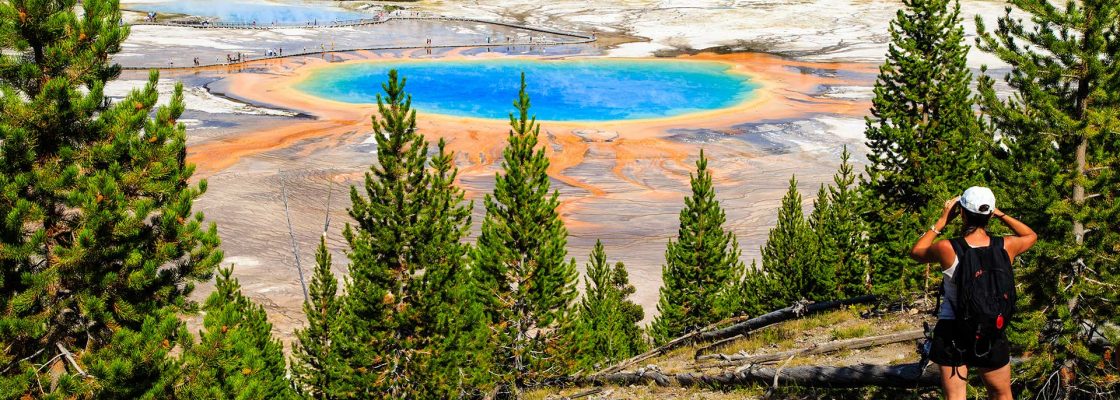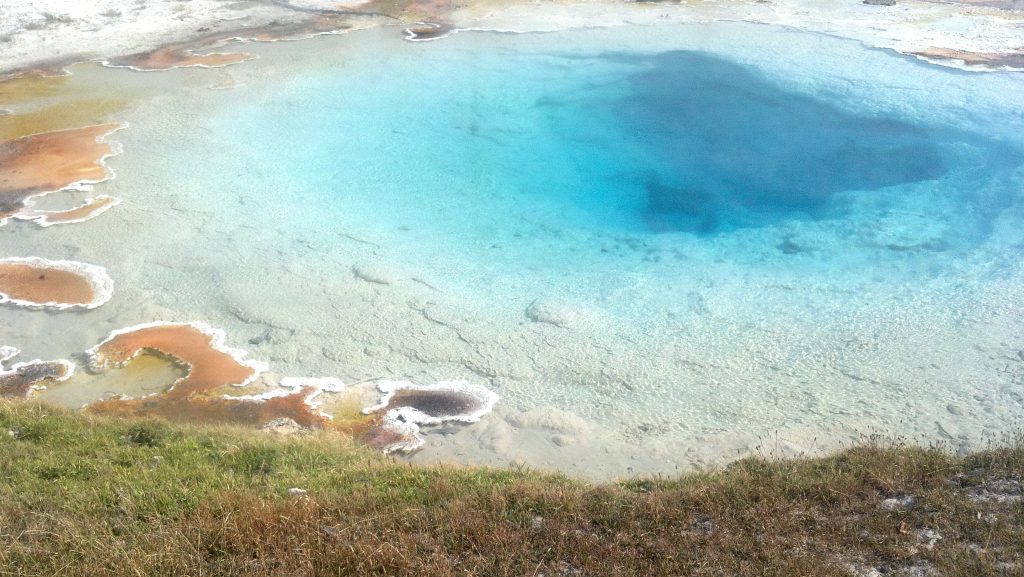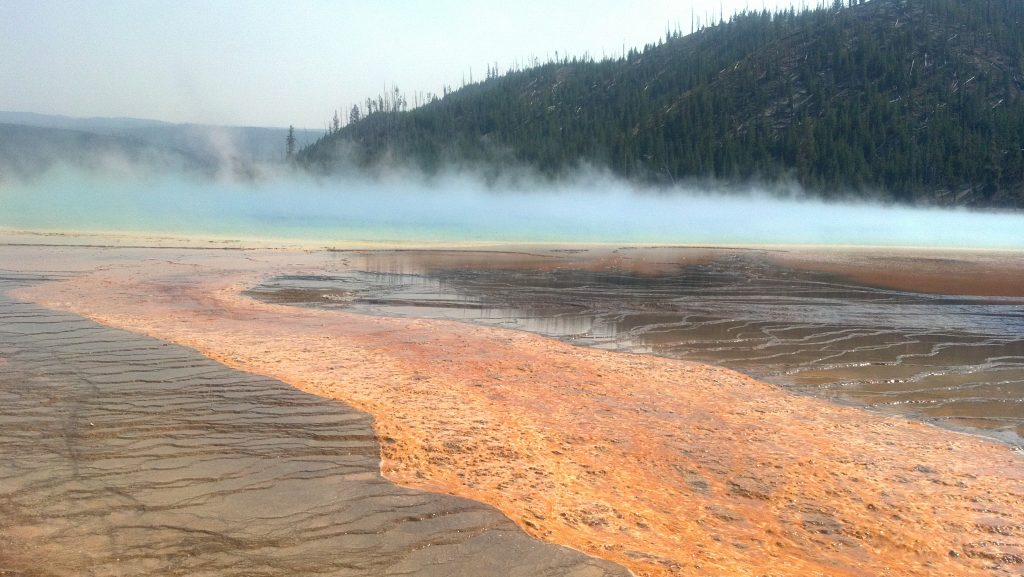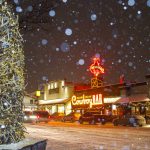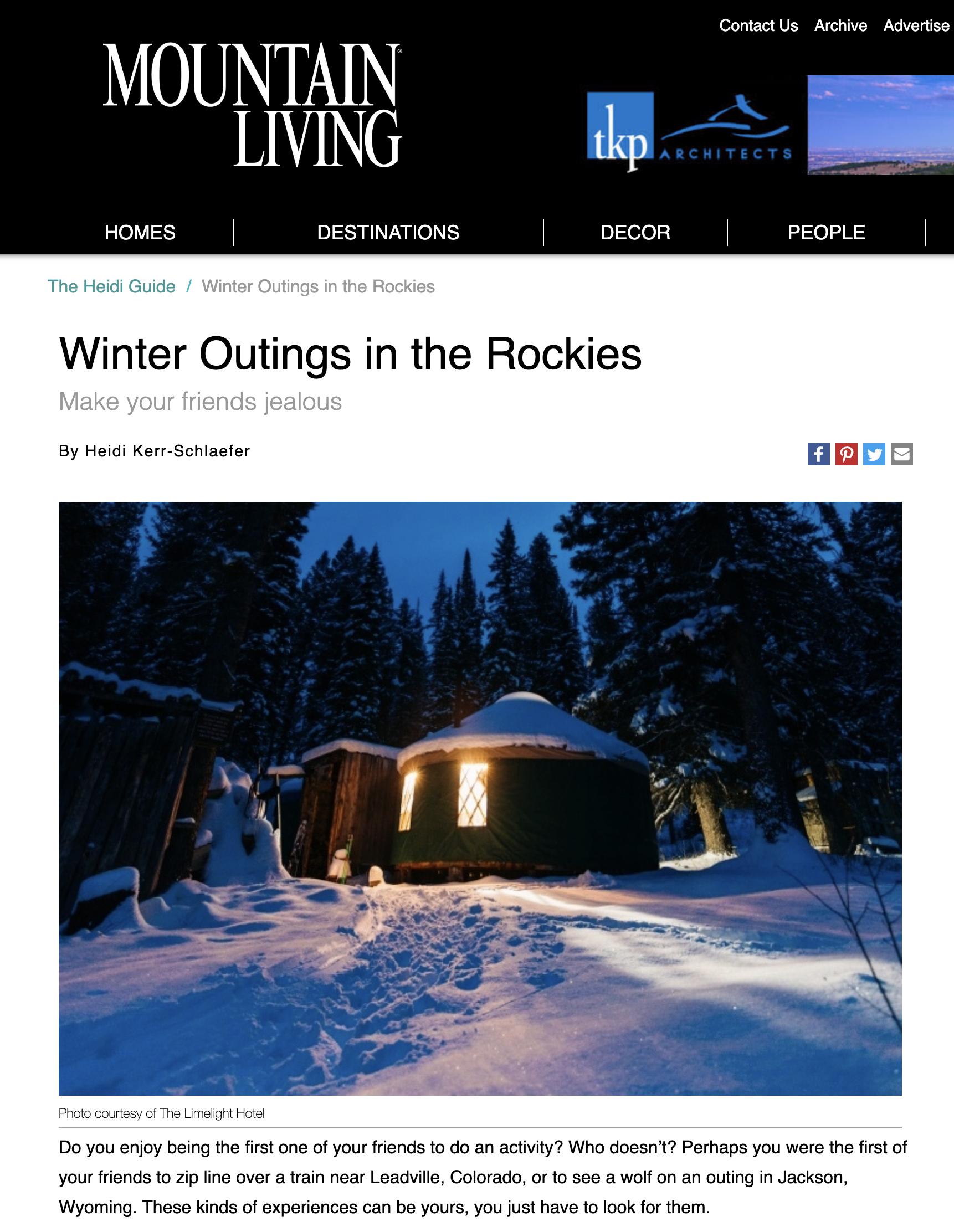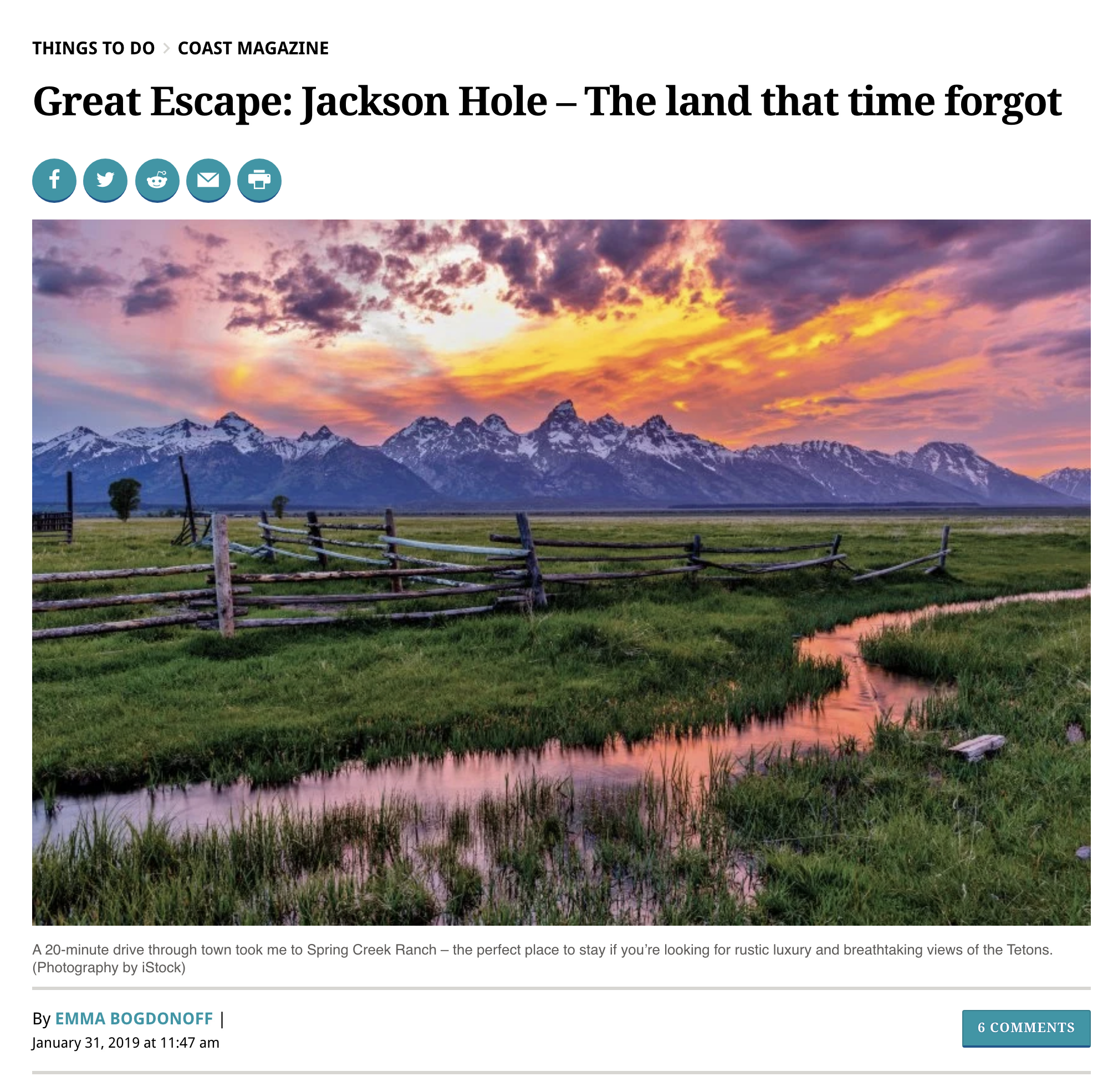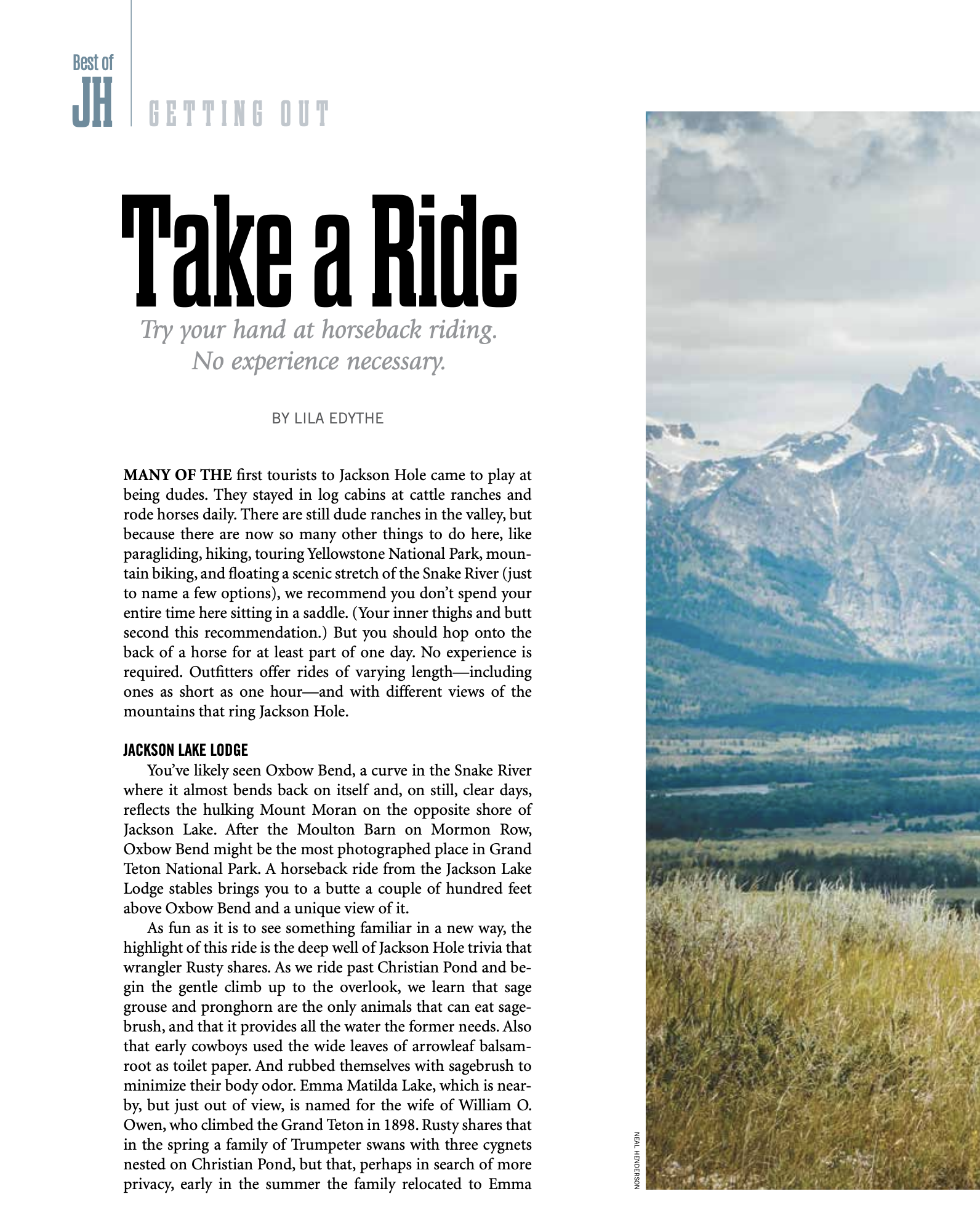What’s Up with Earthquakes in Yellowstone National Park?
Did you know that Yellowstone National Parks has some of the most active seismic activity in the United States? In fact, there are over 3,300 earthquakes in the park each year. As one of the most exciting areas for geothermal activities, there’s a lot to know about earthquakes, pools, and geysers in Yellowstone.
While we are stuck indoors, we miss the natural places we love the most. Although this is a difficult time for everyone, thankfully we have the technology to stay connected. Take a “digital escape” to Yellowstone and learn all about the geological activity in the park. You’ll learn about why this area has so many beautiful pools and geysers, as well as have a way to stay in touch with nature while you’re inside.
Geothermal Activity in Yellowstone National Park
Known for it’s beautiful, jewel-colored pools of piping hot water and sky-high geysers, Yellowstone National Park is a hotbed of geothermal activity. In order to continue to see the beautiful displays of water shooting from the earth, the plates of the earth around Yellowstone constantly shift and change. This creates swarms of small earthquakes. Sometimes you can feel these earthquakes in the park and some go undetectable to humans. In April of 2020, the Yellowstone Monitoring Program recorded 111 earthquakes on April 1, 2020. Most of these quakes aren’t felt by people, they are too small, but special instruments are able to pick up the earth’s movements.
Although there has been an increase in earthquakes in areas like Idaho and Utah, these quakes aren’t associated with the Yellowstone area. Although scientists still have a lot to understand about how and why Yellowstone has seen an increase in activity, they don’t believe the area is under any immediate threat.
Geological History of Yellowstone National Park
One of the things that makes Yellowstone National Park so special, is that the land on the park is actually one giant volcano. Unlike the volcanos on marooned islands in cartoons, the Yellowstone Caldera, or “mouth” of the volcano is about 34 by 45 miles in length – it’s HUGE! Some people refer to it as a supervolcano.
The last time there was a major eruption was 630,000 years ago. Although the volcano itself is still considered active (hence all the geothermal pools and famous geysers), it’s been quite a long time since any major eruption occurred. However, in volcano-years, Yellowstone is relatively young, maybe just getting towards middle-aged.
Where to See Geothermal Activity in Yellowstone
There are plenty of amazing places to see geothermal activity in Yellowstone, including several live webcams where you can see the activity from home. Be sure to check out the following areas for the most interesting geothermal activities in the park:
- Old Faithful Geyser (this erupts on a schedule so you can see it during the day, even on a web cam)
- Cliff Geyser
- Black Opal Spring
- Sapphire Pool
- Mammoth Hot Springs
- Grand Prismatic Spring
- Crested Pool
Each of these places displays unique geothermal activities that play a vital role in the ecosystem of the park. These areas bring life-giving nutrients and minerals from the depths of the earth, straight to the surface. There are even tiny bacteria and other single-celled organisms that live in the piping hot water.
The incredible display of geothermal activity in the park, also gives plants and animals a wealth of nutrients to absorb. The result is the beautiful, rich valleys of Yellowstone filled with an abundance of wildlife.
Why Are There Earthquakes in Yellowstone?
Scientists understand some basic things about plate tectonics or the rubbing and separating of earth’s crust. These movements are what cause earthquakes. The plates rub or split and tension begins to build. Once the tension reaches a certain point, the earth shakes.
In Yellowstone, scientists believe that these plate movements are a natural part of the Yellowstone ecosystem.
There are still lots of things to learn about these movements in the earth’s crust. Many geologists study the movements and activity in Yellowstone year-round. Today, scientists believe, these seismic movements, or earthquakes, act to keep the geothermal activity in Yellowstone sustained. Think of it like snaking a clogged pipe. The earth shifts and moves so geothermal geysers and vents can continue to release pressure in a small, manageable way. Otherwise, the pressure would build and build until there was a super-eruption.
Is it Safe to Visit Yellowstone?
Of course. Geothermal activity has been around in Yellowstone for millions of years. The area is a hotbed for volcanic research, so scientists are constantly monitoring the activity in Yellowstone. If there are any warning signs, scientists work with park officials to close the areas of the park that aren’t safe. As long as the park is open, it is safe to visit. However, you do want to pay attention when you visit. Stay on trails and elevated walkways to avoid accidentally punching through the fragile crusts. Always pay attention to signs and any ranger instructions during your visit.
Lots of people love to talk about the doomed Yellowstone Supervolcano eruption. Many people claim that the volcano is “overdue” for an eruption. Fear not. Volcanos don’t have a schedule to keep. They change and morph on their own agenda and there is no such thing as an “overdue volcanic eruption.”
Our current understanding is that the caldera is in healthy shape and not near a point of eruption just yet. The recent increase in activity could be caused by a variety of different factors, but you shouldn’t worry about visiting the park. Instead, visit the park as a living library to learn about the different types of geothermal activity. You can witness the earth changing and moving in real-time with a visit to this iconic American landmark.
Tags: Jackson Hole, Spring Creek Ranch, yellowstone

